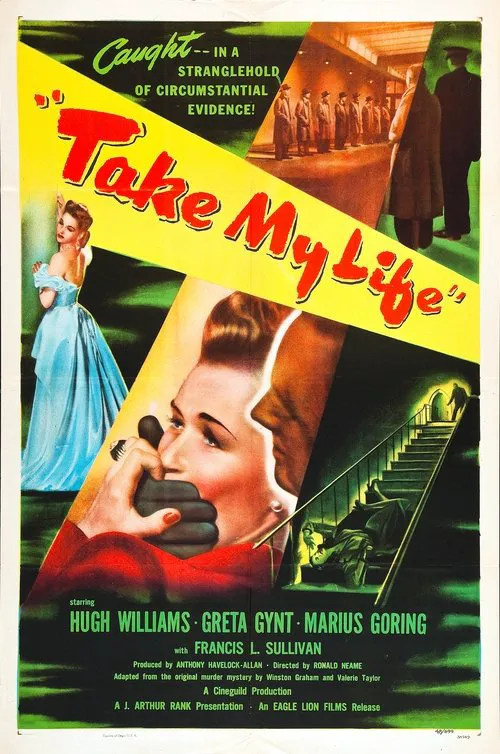Take My Life

Plot
Take My Life is a 1947 British psychological thriller film directed by Ronald Neame. The movie stars Phyllis Calvert and Guy Rolfe as the main characters. The plot revolves around the complex and turbulent relationship between Phyllis's character, Joan Tetley, and her husband, Tom Graham. The movie begins with Joan, a young opera singer, who is deeply in love with her husband, Tom. They live a happy and contented life, albeit one that is marked by tensions and conflicts arising from their vastly different personalities and ambitions. Tom, an ambitious businessman, is driven to succeed, while Joan, with her artistic temperament, is more laid-back. Their differences lead to recurring arguments, but their love for each other remains strong. On the night that the story begins, a murder takes place in the town. Joan finds herself returning to an abandoned house, but she stumbles upon the corpse in the basement instead. The murder victim is revealed to be one of Tom's colleagues, and as a result, he is wrongly accused of the crime. The suspicion against Tom is based on the fact that he has been seen arguing with his colleague on numerous occasions. Devastated by the accusations, Joan takes it upon herself to uncover the truth behind the murder. Her determination to clear her husband's name leads her down a complex and treacherous path, filled with twists and turns. Joan begins to question the events leading up to the murder, re-examining her own testimony and actions. Her investigation into the crime is fraught with complications, as she navigates the intricate web of relationships between the people involved. As Joan digs deeper into the murder, she discovers more about Tom's past, particularly his connection to a female acquaintance. This revelation adds a layer of complexity to their relationship, as Joan grapples with the fact that her husband may have been emotionally close to this woman. This secret threatens to undermine the foundation of their relationship and raises questions about Tom's character. Throughout the investigation, Joan's own mental state becomes increasingly fragile. As her emotions spiral out of control, she begins to lose her grip on reality. Her descent into madness is a chilling portrayal of the psychological trauma caused by the accusations against her husband. The lines between reality and fantasy start to blur, and the audience is left wondering what is true and what is merely part of Joan's deranged imagination. As the truth about the murder begins to unravel, it becomes clear that nothing is as it initially seemed. The investigation ultimately reveals that Tom was, in fact, innocent, but not before Joan's mental state has been pushed to the brink of collapse. The revelation does little to bring her solace, as she struggles to come to terms with the truth about her relationship and the person she thought she knew. In the end, Joan is left to grapple with the aftermath of her ordeal. The experience has a profound impact on her psyche, and she is left to question the true nature of her relationship with Tom. The movie ends with a sense of ambiguity, leaving the audience to ponder the complexity of human relationships and the fragility of the human psyche. Take My Life is a gripping psychological thriller that explores the complexities of human relationships, the nature of reality, and the fragility of the human psyche. The film's portrayal of Joan's descent into madness is a chilling portrayal of the psychological trauma caused by the accusations against her husband, adding depth and nuance to the narrative.
Reviews
Recommendations




